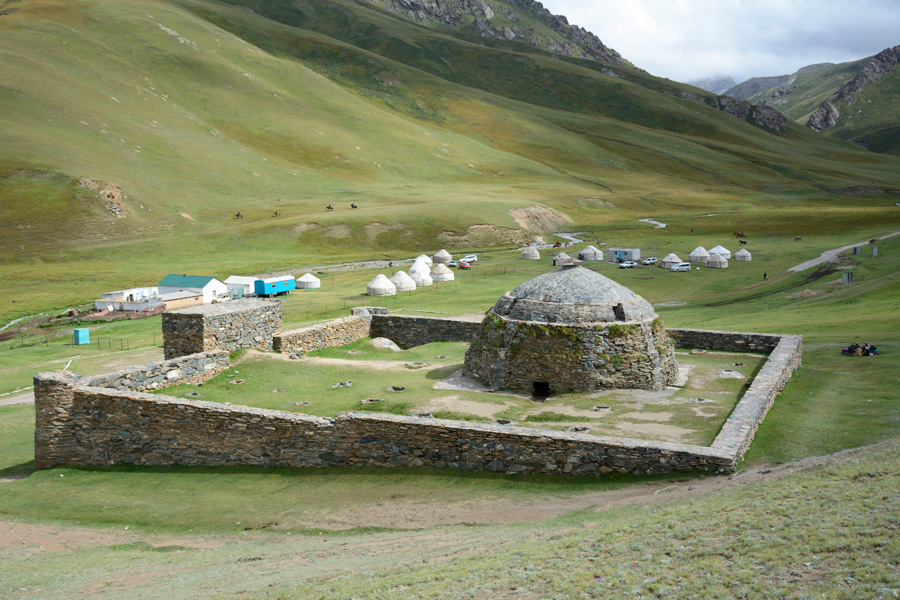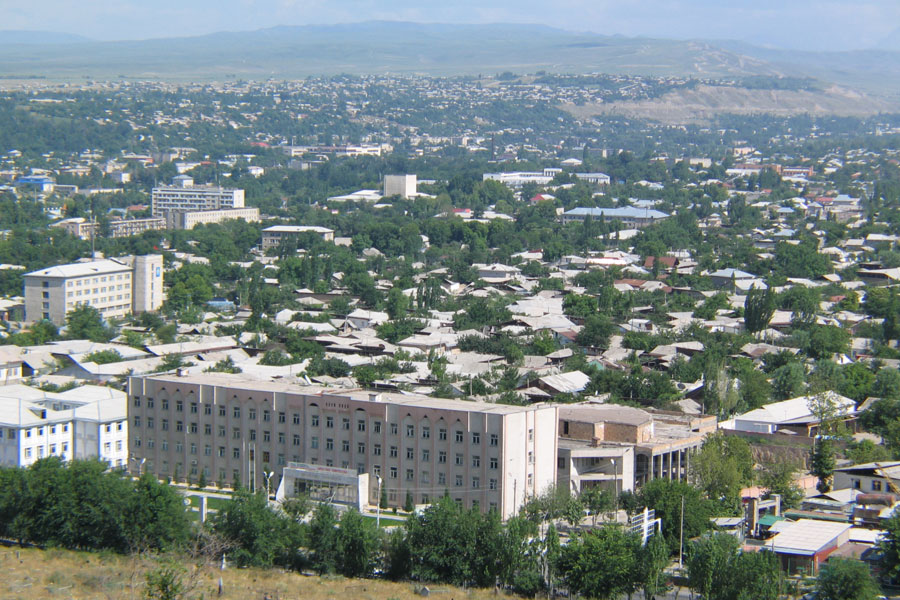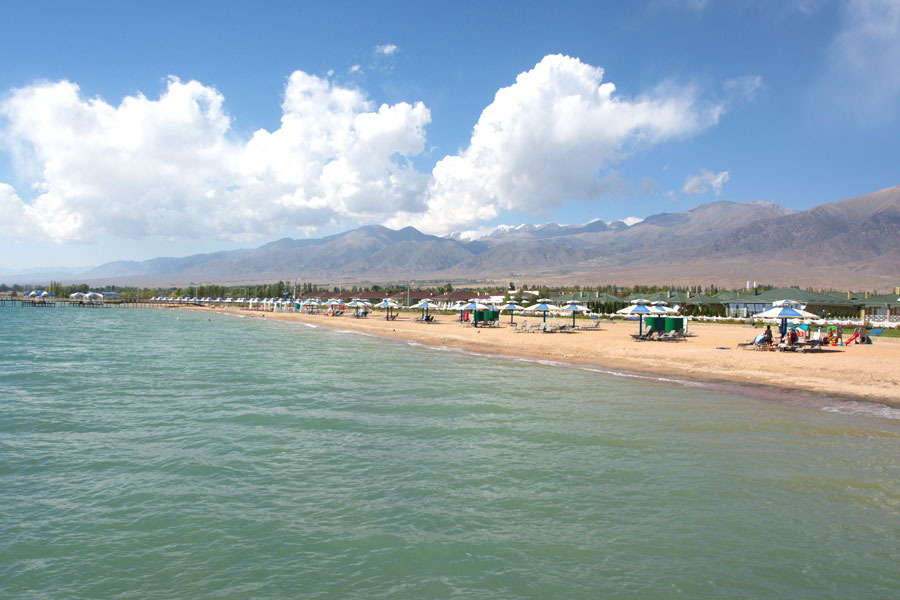
A lot of caravan routes on the Silk Road changed from time to time, except for those basic directions from the East to the West and from the West to the East.
The route passing through Kyrgyzstan always remained the same due to its nearness to the Tien-Shan and Pamir mountains.
In the Middle Ages the following routes of the Silk Road passed through the territory of modern Kyrgyzstan - Pamir-Alay, Fergana, and Chuya.
The first branch went from Termez through Samarkand, along the inflow of the Kyzyl-Suu to Alay and led to Kashgar.
Fergana line went from Samarkand through Khujand to the city of Osh. Osh was the main intermediate trade point whence caravans went further to Kashgar across the Torugart Pass.

The third branch passed from Zamin Rabat to Tashkent, Ispedzhab, Taraz, Nuzket (Kara-Balta) and Balasagyn (Buran). From there caravans traveled along the Boom Canyon to reach the Issyk-Kul area and further to China across the San-Tash range.
The presence of caravan routes led to the emergence and growth of rich cities, trade and craftsmen’s villages, caravanserais – Dzhul, Suyab, Novokent, Balasagyn,Boroskohon, Tash Rabat, Osh, and Uzgen. The medieval Kyrgyzstan became one of the cultural centers of ancient Turkic people.
Until now the territory of Kyrgyzstan preserves the memories in the form of monuments located on the Silk Road: Kumbez Manas, caravanserai “Tash-Rabat” (9th century), Burana Tower, Mount Suleiman (Suleiman-Too), Uzgen architectural complex, Shah-Fazil mausoleum.


